How to cover an outlet hole?
Whether you’ve removed an outlet, need to replace a damaged cover, or want to seal off an unused outlet for safety and aesthetic reasons, learning how to cover an outlet hole is essential. In this guide, we’ll walk you through various methods for covering outlet holes, giving you simple, step-by-step instructions. From outlet hole covers to decorative plates and other DIY solutions, we’ll help you achieve a seamless finish that fits your home’s needs.
Learn how to cover an outlet hole with our simple, step-by-step guide. Explore options like outlet hole covers, plates, and other DIY solutions for a seamless finish.
Why Should You Cover Outlet Holes?
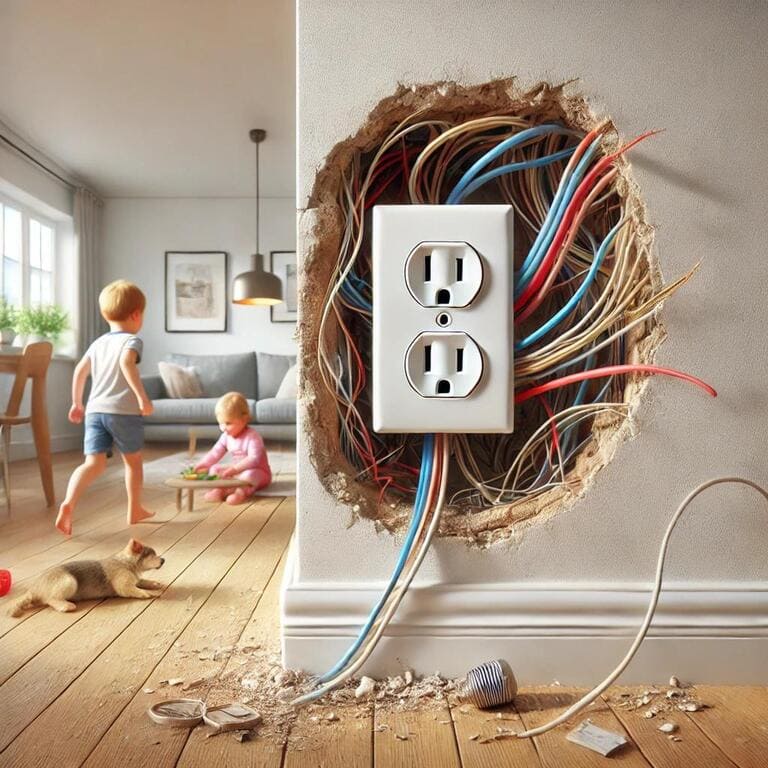
Leaving an outlet hole exposed isn’t just unsightly—it can also be dangerous. Outlet holes expose internal wiring, increasing the risk of electric shocks or accidental contact, especially in homes with children or pets. Additionally, an uncovered outlet can collect dust and debris, potentially damaging the internal components. Covering outlet holes creates a polished, finished look while ensuring safety.
Common Reasons to Cover Outlet Holes:
- Electrical Safety: Open outlets can pose a shock risk, especially to curious kids or pets. Exposed wiring inside an outlet hole can cause accidental contact, potentially leading to injury.
- Preventing Debris: Unused outlets can collect dust, dirt, and grime over time. This buildup can damage the internal components of the outlet and affect its function if it’s used later.
- Improved Aesthetics: Covering the hole ensures a clean and tidy look for your walls. Open outlet holes can be an eyesore, especially if you’re redecorating or remodeling your space.
Whether you need a quick fix or a long-term solution, there are plenty of ways to cover outlet holes depending on your specific situation.
Temporary Solutions to Cover an Outlet Hole
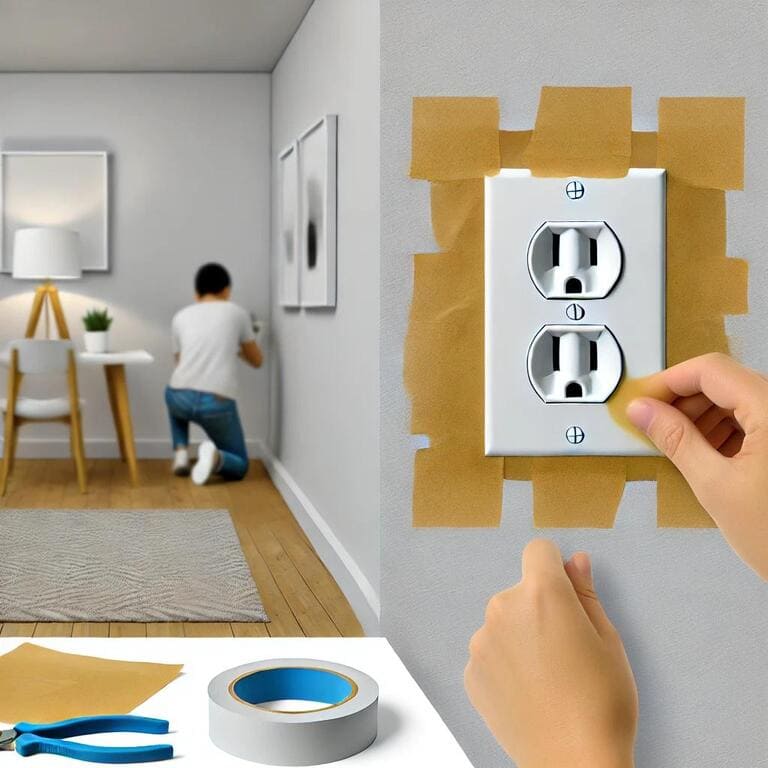
If you’re not ready for a permanent change, temporary solutions can effectively cover an outlet hole without altering your space permanently. These solutions are especially useful if you plan to use the outlet again or just need a quick fix.
Use Outlet Plugs or Safety Covers
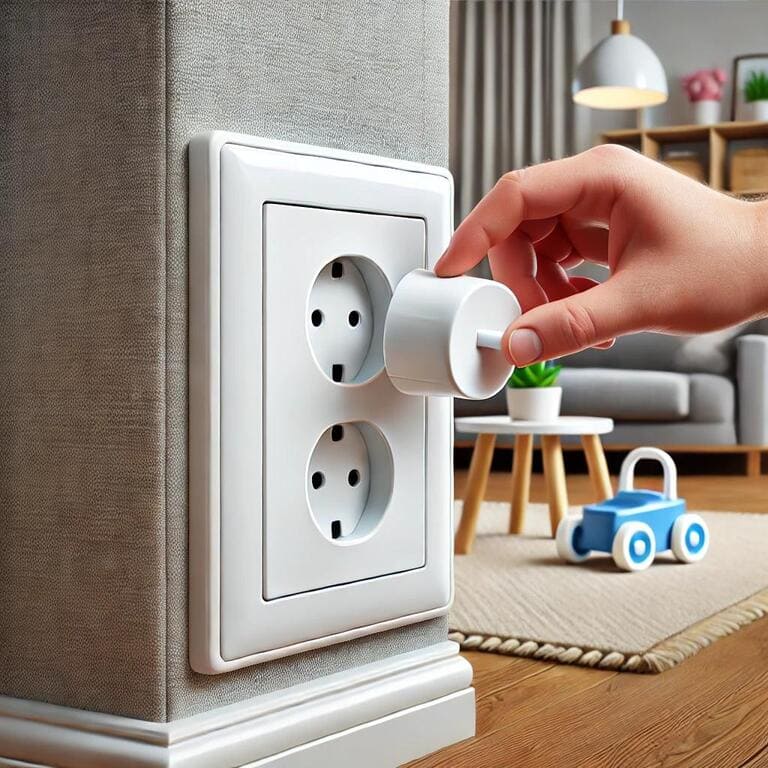
For a temporary and child-friendly option, outlet plugs or safety covers are the simplest solutions. They offer protection while maintaining access to the outlet if needed.
Installing Outlet Plugs
Outlet plugs are small, plastic devices that fit into the outlet’s prongs, covering the entire hole. They are easy to install and remove.
- Simply press the plug into the outlet until it clicks into place.
- This is a cost-effective and easy solution that can be removed if the outlet needs to be used later.
Outlet plugs are especially useful in homes with young children, as they prevent them from inserting objects into the outlet, reducing the risk of electric shocks.
Installing Outlet Safety Covers
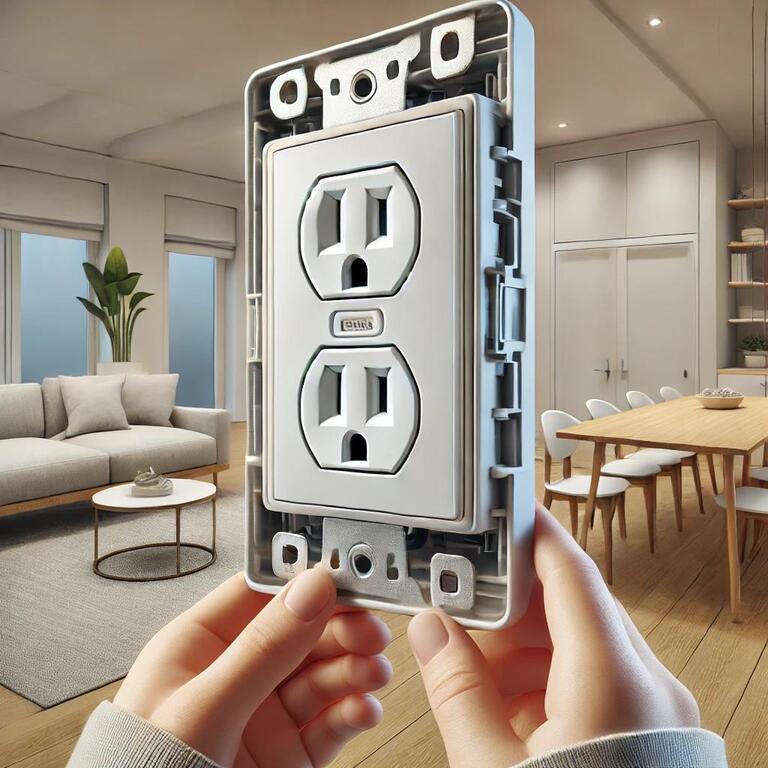
Safety covers provide a more secure solution than outlet plugs. They often include a sliding or rotating mechanism that covers the outlet when not in use, making them more difficult for children to remove.
- Snap or screw the cover over the outlet plate.
- This method provides easy access when needed but ensures safety for the times the outlet isn’t in use.
Safety covers are ideal for outlets that are frequently used but still require a level of protection when not in use, making them a versatile option for any household.
Use Decorative Wall Plates

If you’re looking for a more aesthetically pleasing solution, decorative wall plates are a great way to temporarily cover outlet holes while adding style to your room. Decorative wall plates can be easily swapped out or removed, making them a flexible option for any space.
How to Install a Decorative Wall Plate
- Remove the Existing Cover: Unscrew the current plate from the wall.
- Select Your Decorative Plate: Choose a wall plate that matches the room’s design. Decorative plates are available in materials like wood, metal, or plastic, and in various finishes such as chrome, brass, or painted designs.
- Install the New Plate: Screw the decorative plate into place, ensuring it fits snugly.
Decorative wall plates come in a wide range of materials, styles, and finishes, so you can find one that complements your home’s interior design. Whether you want a modern, minimalist look or a vintage feel, there’s a decorative plate to suit your taste.
Permanent Solutions to Cover an Outlet Hole
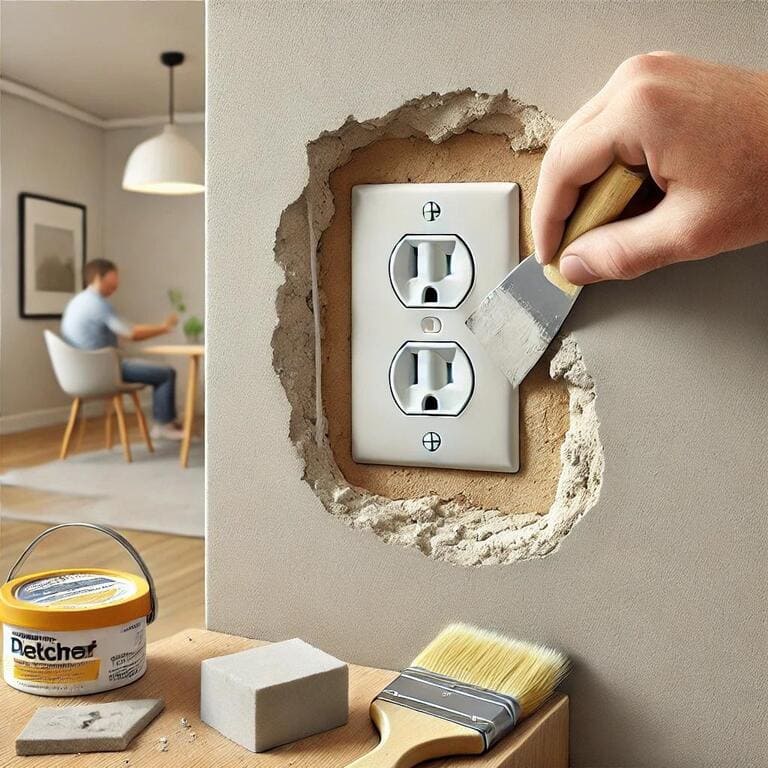
For a more lasting fix, you may want to permanently cover an outlet hole. These solutions are ideal for outlets you no longer need or for holes that were created during a renovation or remodel. Permanently covering an outlet ensures that it’s sealed off safely and blends in seamlessly with your wall.
Replace the Outlet with a Blank Plate

One of the most effective permanent solutions is replacing the outlet with a blank wall plate. Blank plates cover the entire outlet hole and eliminate access to any wiring inside. They are easy to install and provide a clean, finished look to the wall.
Steps to Install a Blank Plate
- Turn Off the Power: Before starting any electrical work, switch off the power to the outlet.
- Remove the Existing Outlet: Use a screwdriver to remove the outlet and disconnect the wires. Ensure that the wires are safely capped and secured.
- Install the Blank Plate: Place the blank cover over the outlet box and screw it in securely.
By replacing the outlet with a blank plate, you not only cover the hole but also protect against tampering with unused outlets. This solution is ideal for outlets that you no longer need or that are in areas where they aren’t functional.
Patch the Wall
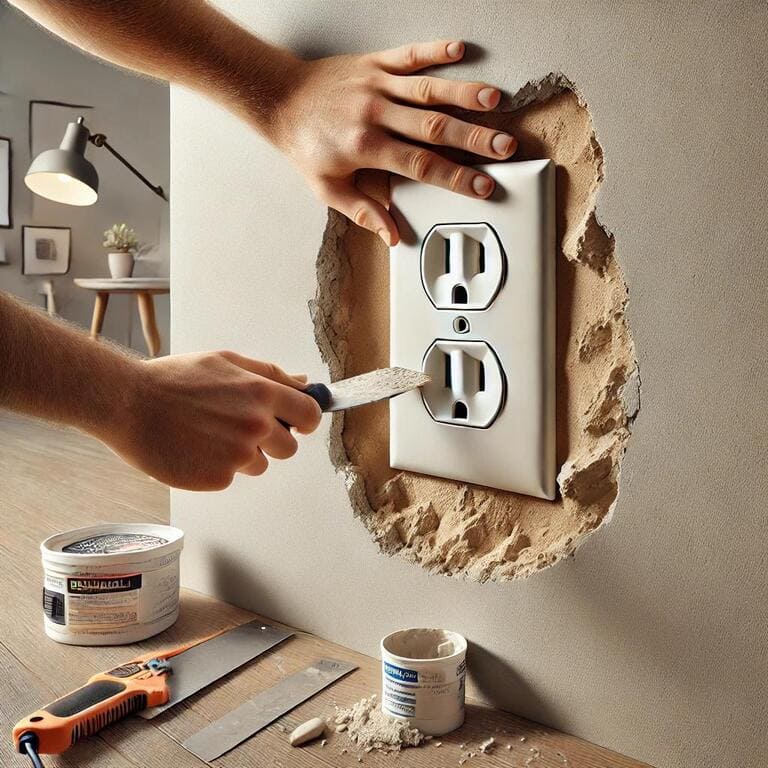
If you want to completely remove the outlet and create a smooth wall surface, you can patch the hole. This process involves filling in the hole with drywall and finishing the surface to blend seamlessly with the rest of the wall.
How to Patch an Outlet Hole
- Turn Off Power and Remove the Outlet: As always, turn off the power before removing the outlet. Ensure the wiring is properly disconnected and capped.
- Prepare the Hole: Clean out any debris from the hole and trim the edges if needed to fit a drywall patch.
- Install Drywall: Cut a piece of drywall to fit the hole, screw it into place, and then cover it with joint compound.
- Sand and Paint: Once the joint compound is dry, sand the surface smooth and repaint the area to match the rest of the wall.
Patching the wall is a more permanent option that removes the outlet entirely, giving you a clean, unbroken wall surface. It’s ideal for renovations or for rooms where the outlet is no longer needed.
How to Put On an Outlet Cover

If you’re simply replacing an old or damaged cover, the process of putting on an outlet cover is straightforward and quick. This solution is both functional and aesthetic, ensuring that the outlet is protected while blending in with the room’s design.
Steps to Put On an Outlet Cover
- Turn Off Power: As always, make sure the power to the outlet is off.
- Remove the Old Cover: Unscrew the existing outlet cover and remove it.
- Align the New Cover: Place the new cover over the outlet, ensuring it’s aligned with the wall box.
- Secure the Cover: Use screws to fasten the cover into place. Tighten until secure, but avoid over-tightening, which could crack the cover.
Outlet covers come in a variety of styles, materials, and finishes, so you can choose a cover that complements your room’s aesthetic while serving its functional purpose.
Creative and Decorative Solutions for Covering Outlet Holes
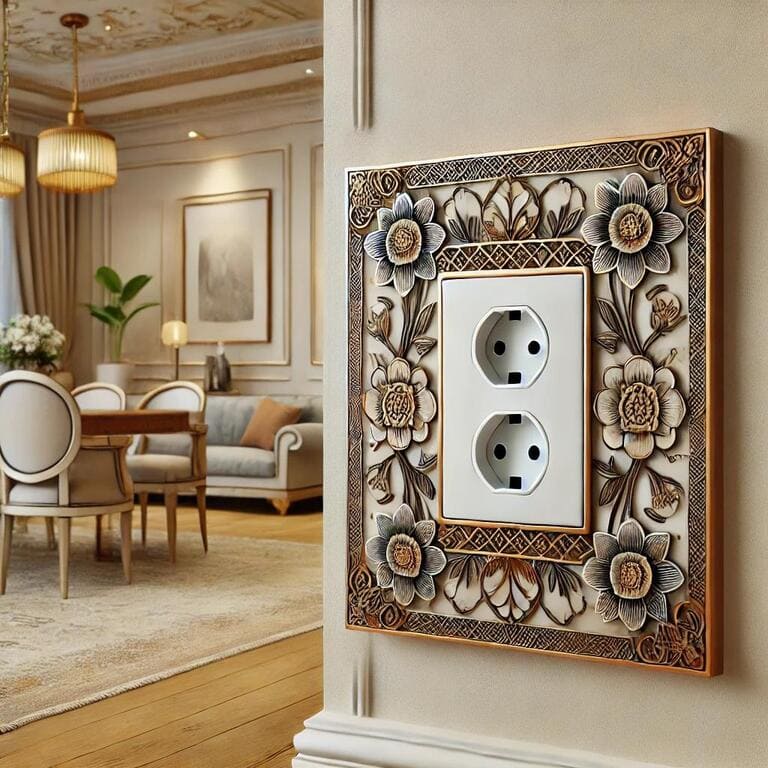
In some cases, covering an outlet hole isn’t just about safety—it’s also about style. For those looking to add a decorative touch while covering an outlet hole, here are some creative solutions that blend functionality with design.
Use Decorative Outlet Covers
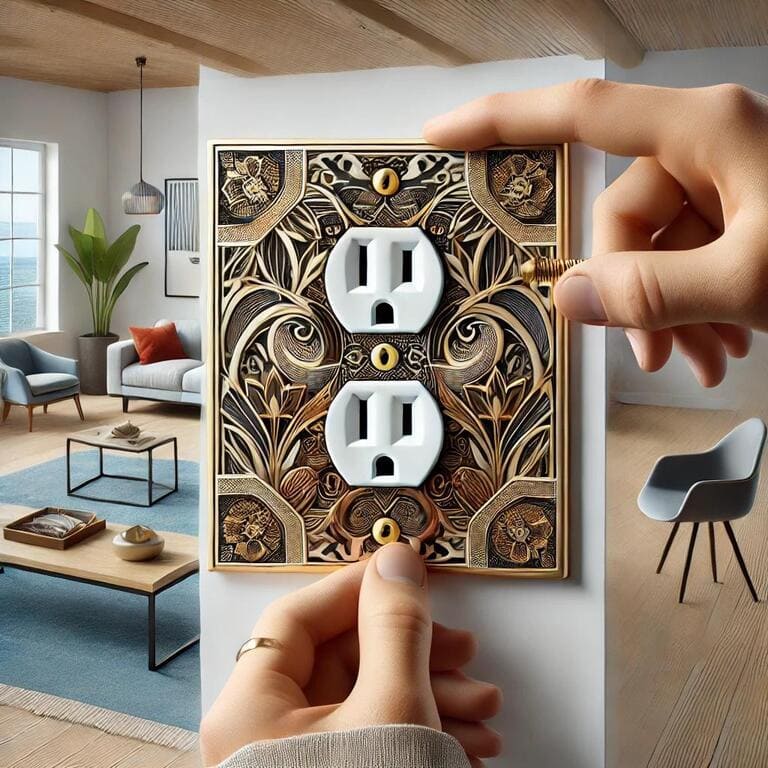
For a simple yet stylish solution, consider using decorative outlet covers. These covers are available in various designs and materials, from brass and ceramic to modern plastic finishes. Decorative covers not only protect the outlet but also add a touch of personal style to your space.
Installing Decorative Outlet Covers
- Choose Your Design: Select a decorative outlet cover that fits the theme of your room. You can choose from a wide range of patterns, materials, and colors to complement your décor.
- Install Like a Standard Cover: Attach the cover as you would any other outlet cover by aligning it with the holes and securing it with screws.
Decorative covers can transform an ordinary outlet into a focal point or help blend it seamlessly into your decor. This solution is perfect for those who want a quick and easy way to enhance their room’s design while keeping outlets functional.
Cover Outlet Holes with Wall Art

Another creative idea is to conceal the outlet hole with a piece of wall art. This method is ideal for spaces where you don’t need access to the outlet and want to hide it in a decorative way.
How to Use Wall Art to Cover an Outlet Hole
- Choose Art That Matches Your Space: Pick a framed piece of art or a decorative item that is large enough to cover the outlet hole. Make sure the art complements the style of your room.
- Mount the Art Over the Outlet: Hang the art using hooks or wall-safe adhesive strips, ensuring it completely covers the hole.
This solution is both functional and stylish, allowing you to turn an unsightly outlet hole into a piece of your room’s design.
Additional Tips for Covering Outlet Holes
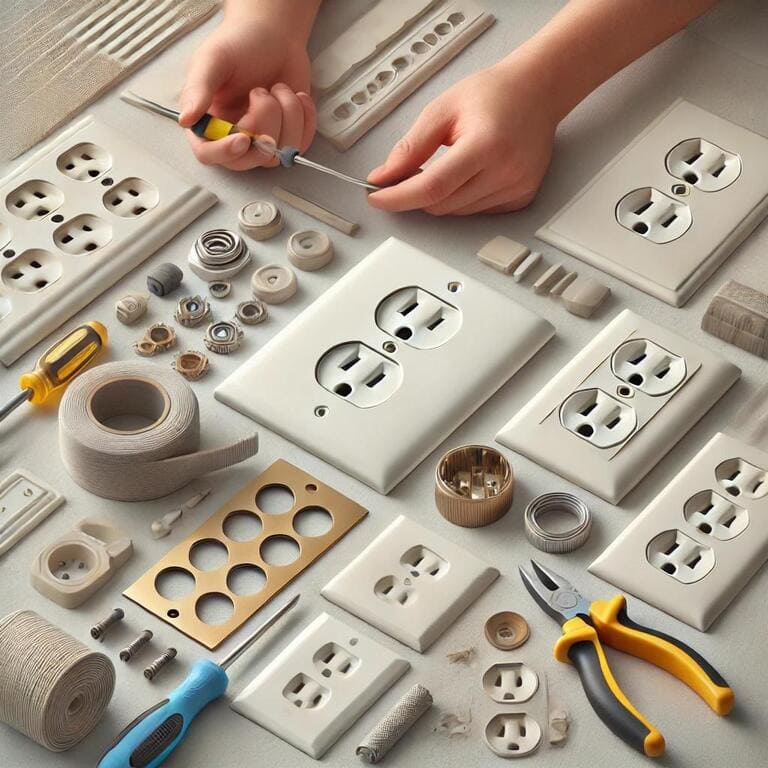
Whether you are covering an outlet for safety, style, or both, here are a few additional tips to keep in mind:
Measure the Outlet Hole
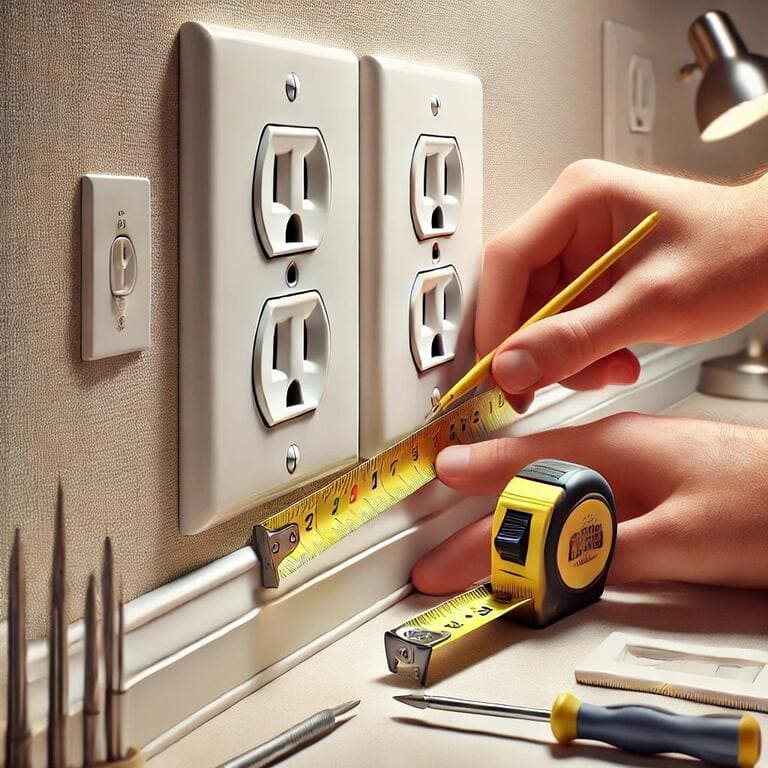
Before purchasing outlet covers or plates, make sure you measure the size of the outlet hole. Most standard outlets are the same size, but if you have a larger hole or a unique design, you’ll want to ensure the cover fits properly.
Choose Durable Materials

If you are covering an outlet in a high-traffic area or a location prone to wear and tear, consider using more durable materials like metal, wood, or thick plastic. These materials can withstand frequent use and prevent damage over time.
Coordinate with Your Interior Design

For an added touch of style, choose outlet covers and plates that match or complement your room’s color scheme and design. Outlet covers are available in a variety of finishes, including chrome, brushed nickel, and antique brass, allowing you to blend functionality with aesthetics.
Conclusion
Knowing how to cover an outlet hole ensures both safety and aesthetic appeal in your home. From quick, temporary fixes like outlet plugs and safety covers to more permanent solutions such as blank plates and wall patches, there are various options available to suit your needs. Whether you’re looking for a simple DIY solution or a decorative approach, covering an outlet hole doesn’t have to be complicated. Explore options like outlet hole covers, plates, and other DIY solutions for a seamless finish that enhances your home’s safety and style.

